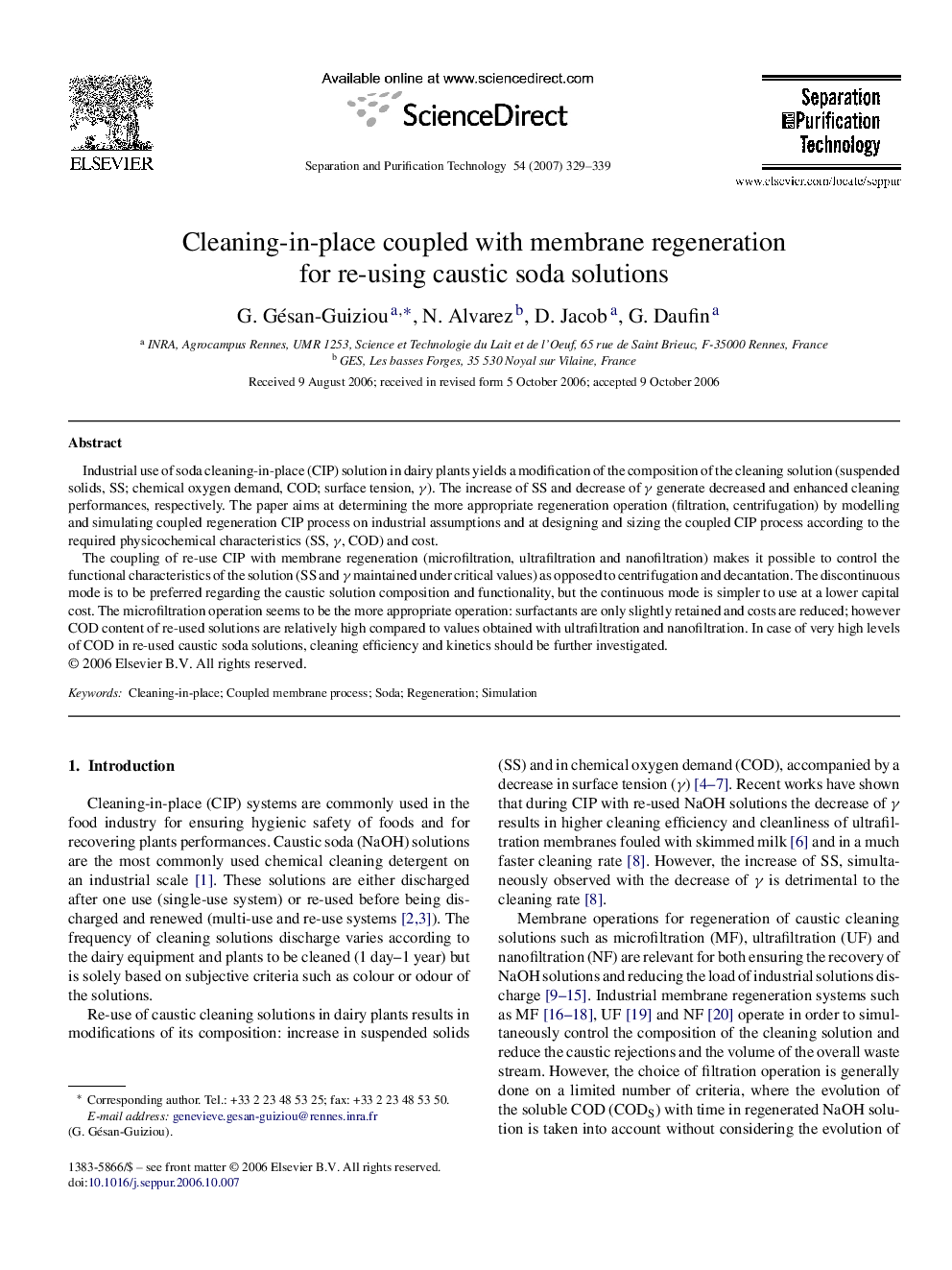| Article ID | Journal | Published Year | Pages | File Type |
|---|---|---|---|---|
| 644051 | Separation and Purification Technology | 2007 | 11 Pages |
Industrial use of soda cleaning-in-place (CIP) solution in dairy plants yields a modification of the composition of the cleaning solution (suspended solids, SS; chemical oxygen demand, COD; surface tension, γ). The increase of SS and decrease of γ generate decreased and enhanced cleaning performances, respectively. The paper aims at determining the more appropriate regeneration operation (filtration, centrifugation) by modelling and simulating coupled regeneration CIP process on industrial assumptions and at designing and sizing the coupled CIP process according to the required physicochemical characteristics (SS, γ, COD) and cost.The coupling of re-use CIP with membrane regeneration (microfiltration, ultrafiltration and nanofiltration) makes it possible to control the functional characteristics of the solution (SS and γ maintained under critical values) as opposed to centrifugation and decantation. The discontinuous mode is to be preferred regarding the caustic solution composition and functionality, but the continuous mode is simpler to use at a lower capital cost. The microfiltration operation seems to be the more appropriate operation: surfactants are only slightly retained and costs are reduced; however COD content of re-used solutions are relatively high compared to values obtained with ultrafiltration and nanofiltration. In case of very high levels of COD in re-used caustic soda solutions, cleaning efficiency and kinetics should be further investigated.
